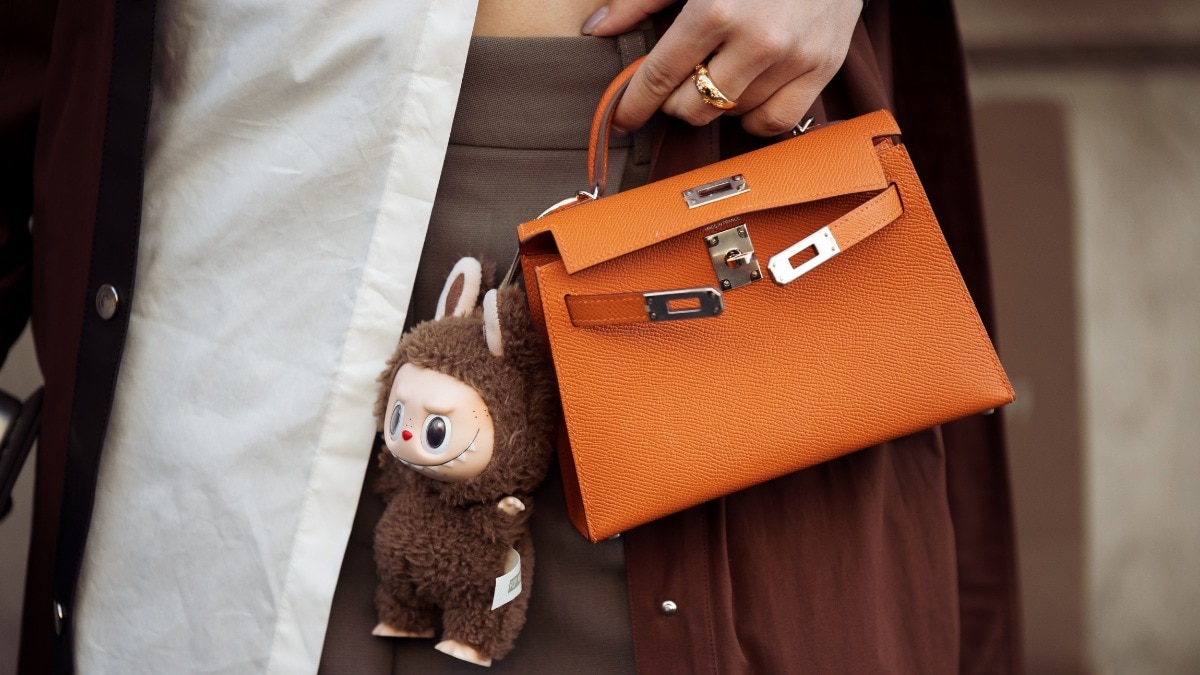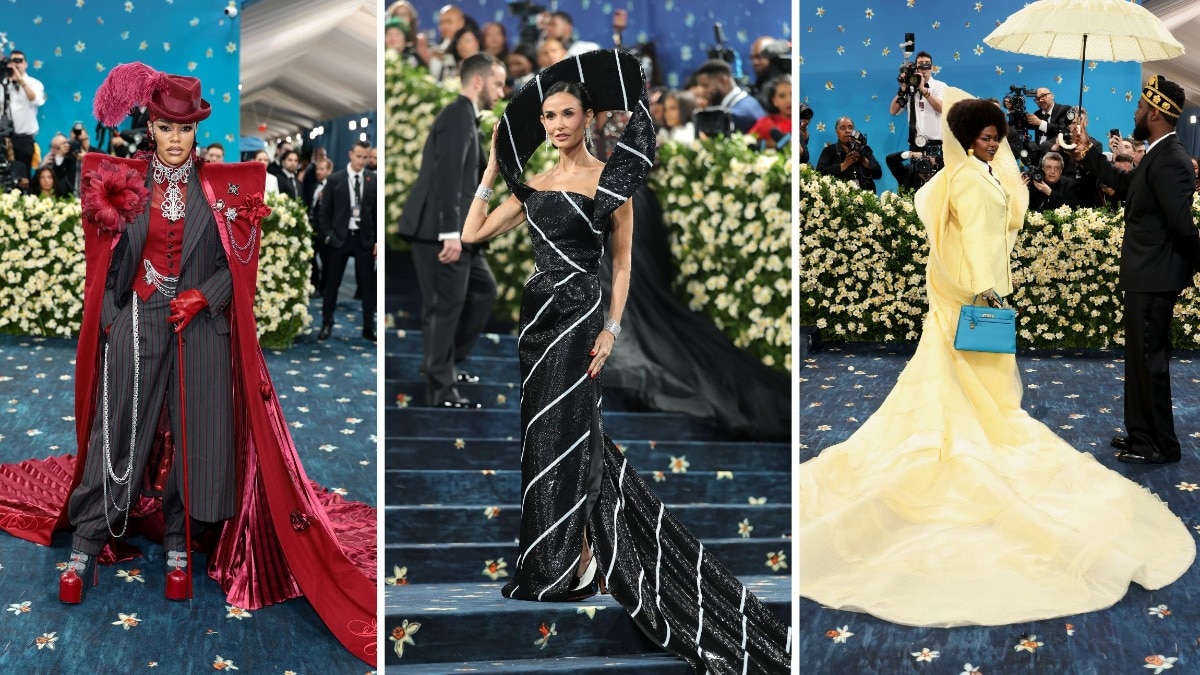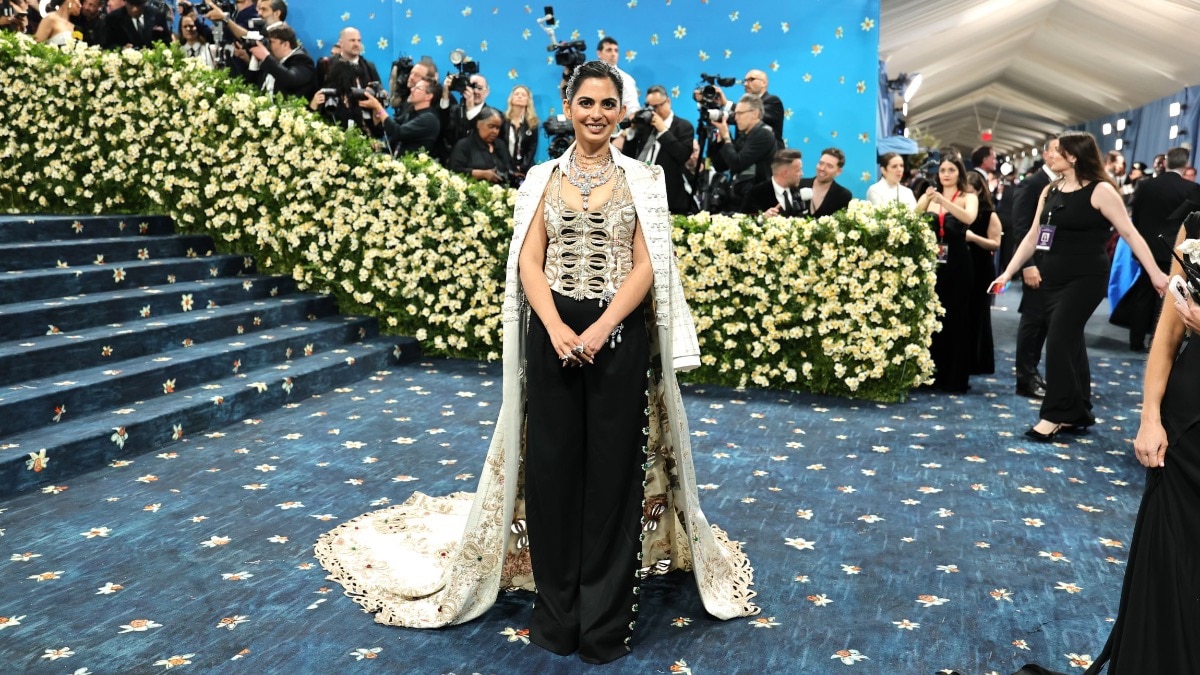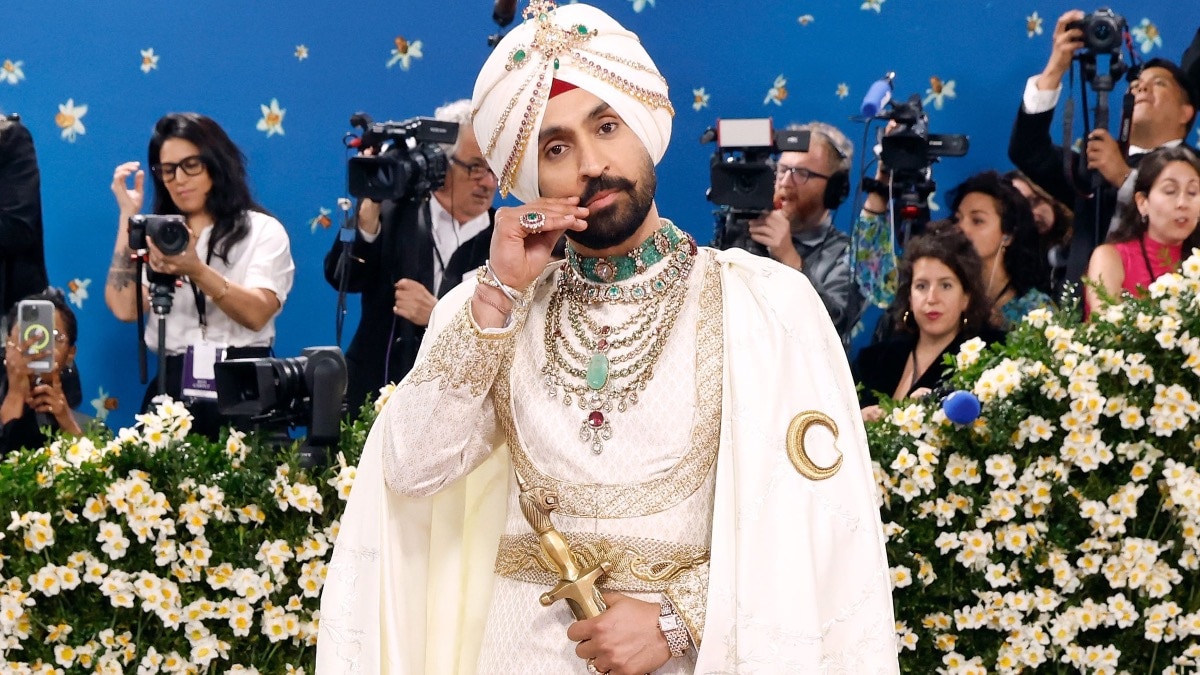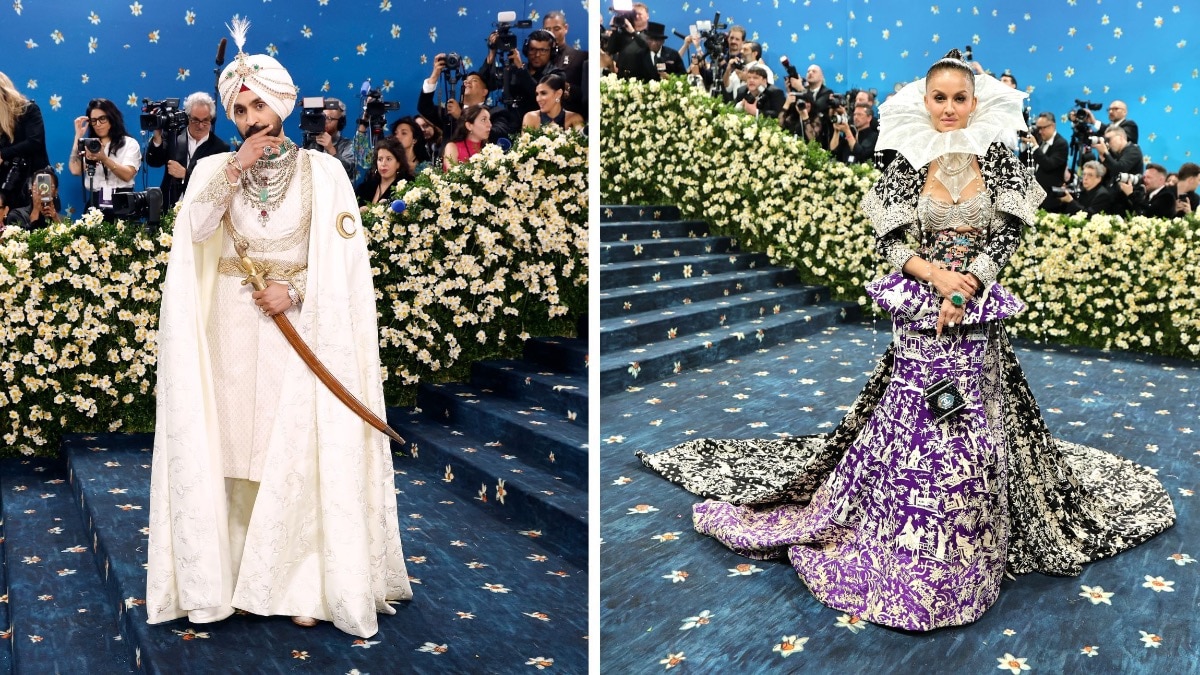Ahead of his second showcase at London Fashion Week 2023, designer Harri talks about what it takes to drop a viral collection
Still beaming from singer Sam Smith wearing him at a recent award, plus his last collection that went viral on the Internet, he tells us what's next.


An idea he got while playing with his dog led him to create a collection that went viral at the Spring/Summer 2023 edition of London Fashion Week last year. UK-based Indian designer Harikrishnan Keezhathil Surendran Pillai a.k.a Harri’s inflatable trousers were spoken about by fashion influencers and leading fashion publications alike. At the 2023 Brit Awards, singer Sam Smith sported a customised all-black latex suit, bringing back the spotlight on Harri's creation. The designer is all set to present the next drop at the London Fashion Week this month (February 17-21).
Bazaar India has an exclusive conversation with the 28-year-old designer to understand what it means to design a viral collection, his time growing up in Kerala, and looking micro to design a collection that makes noise at a macro level.

Sonal Ved: Did you expect your graduation collection of gravity-defying inflatable latex trousers to go viral? Did you sense the virality component in them?
Harikrishnan (aka Harri): I never thought the concept would go viral. I created these trousers in 2018, and showcased them a couple of times, but nobody noticed them. It was a small show, within the walls of our college, the London College of Fashion. I had another show in college at the end of 2019, and then in 2020, I had the public show. Even then, no one noticed it for two weeks, until it was on Twitter, which is where it kind of got noticed.
SV: You say you accidentally got into the London College of Fashion. How does that happen to anyone?
Harri: I am from Kerala, and I lived there till I was 18. Then I moved to Bengaluru and got into the National Institute of Fashion Technology (NIFT) to pursue fashion design. That was in 2012. I think my life truly started then. Then I stayed in Delhi for two years. In 2016, I applied for my master’s programme. My friend and I wanted to do it together. I was just there to support her interview, but we both got in.

SV: Does the love and virality that’s come your way so nonchalantly, from a collection that was meant to be part of your graduation curriculum, put a lot of pressure on you to create?
Harri: There are so many layers to this. Yes, you created something and are getting a lot of attention for it. People are commenting on your work and you are getting various perspectives. Normally, if you are in college, you get reviews from your tutors or judges, and when you present your collection as an established designer, you get reviews from the press. I, though, am being judged by everyone, even by people on the street. You’re kind of put in a place where you have to justify what you do to people who you were not taught to justify to, and, of course, to your parents.
SV: It is often challenging for Indian parents to understand careers and concepts like your latex trousers. Do yours understand it? What was their reaction to it?
Harri: When I told my father I was preparing for my showroom presentation in Paris, he asked me, “Are you still making rubber clothes?” The implied question there was whether or not I had progressed to making actual clothes yet. So you know what I’m dealing with.
And that’s the thing, now I have to explain myself to everyone, and that kind of puts me under pressure. In addition to this, one also needs to deal with all the negative comments on social media—there were a lot of negative comments on YouTube after this highly experimental graduate collection was launched.

SV: Do you have a Reddit thread yet?
Harri: I do. I have a Reddit thread and I have a YouTube comments section. But after a point, you kind of feel good because you see all these people talking about your work. Now it’s all about sustaining the work and evolving. It’s about finding how I can do more, how I can move forward.
SV: Where has that stream of thought led you to? You said, you don't want people to talk about the trousers anymore, so what do you want them to talk about?
Harri: Do I have any control over people talking about anything? If I think in that direction, then there is the pressure to create things that people question or become conversation starters. I don’t want to create anything with virality or talk about it as a by-product. I just enjoy the process of creating a piece. My pure pleasure while designing the pants was finding ways to fill in the air, creating all the structures, and thinking of ways in which I can make it wearable. That’s the final challenge; I can create the shape, I can even sculpt it, but what happens after it is out of my studio? How will it be more wearable? For me, it’s not what people will talk about. Yes, it helps me when people talk about it; I can write my references, bring out my references, or make it more relatable. But really, it’s just about the pleasure of making.
SV: Now that it’s been so many months to “the moment”, how has the buyer's reaction been to all of this? The trousers come with a lot of instructions—don’t over-inflate; keep them away from heat, metals, oils, and more.
Harri: The buyers are extremely aware of what they’re buying. It’s a high-value product because everything is handmade. It is a specialised, customised piece. I have that time and liberty to educate the customer on the piece—how to use it, how to keep it, and how to maintain it. I am not producing it in bulk, although last season some buyers did ask for more pieces.
SV: Would you say it’s costume too?
Harri: Yes, but it depends on the customer and how they want to interpret it; you can wear it for an event at the club or a performance, there are a lot of occasions when you can wear it.

SV: So wearability versus costuming, do you prefer either, or do you think the right garment should have a mixture of both?
Harri: As a designer, I don’t think it’s either-or; you can do both. It’s the result of a collection with so many garments and artefacts. It is called a collection because there are so many things to it. I’m very happy that my collection has so many things to offer to so many types of people—there’s a performance audience, a ready-to-wear audience, a statement audience.
SV: Do you have an ideal audience who you want to cater to?
Harri: Oh, that’s a tough question. If I knew that I’d be in a better place, right? But for something like the inflatable trousers, I would say the ideal audience is very risk-taking people from different walks of life. I’ve had a second season of ready-to-wear, which is more safe and more accessible; it’s toned down.
SV: Your use of Channapatna beads in the debut collection didn’t make it to the news as much, but it gave such a great glimpse of your heritage.
Harri: I can’t think without going back to my Indian roots; it is part of everything I do. I come to India all the time to source and work. For example, my dyers are in India; I have a dyer who has been in the trade for almost 40 years, and has been working with me for six years.
SV: Where do you procure most of your material from in India? And how often does your work bring you back to the country?
Harri: I procure material from Channapatna, Delhi, and Ludhiana, and my assistant is based in Kerala. But I don’t visit India frequently; I come once every six months for a month and spend half my time in Delhi and the other half in Kerala. I can’t spend too much time in India, because a lot of my operations and my PR are in the UK. Eventually, I want to spend equal time in India and the UK, travelling every three months, but I don’t think that’s possible at this point.

SV: Are there any other techniques, textures, or fabrics that you are currently experimenting with for your next collection?
Harri: Yes. We are developing a handwoven fabric in India. I have a group of knitters in New Delhi working with us this season. I don’t have a clear idea what these would be, because they are still getting made.
SV: Did you ever end up wearing the pants?
Harri: No. I don’t think I’m going to wear it. I’m just going to keep it. It’s like my mother cooking beef; she never had it, but she cooks amazing beef.
SV: What’s next for you?
Harri: Setting up a sustainable business model and at the same time developing my artistic identity. London is a good place to balance both. It has a history of both. So, I’m in the right place. I just need to make sure I spend the next couple of seasons refining my core offerings, figuring out my core competence, evaluating what resources I have and what resources I need. And then it’s just about bringing it all together and seeing how I can move forward with it.
SV: Do any other Indian designers inspire you?
Harri: I was in fashion because I liked tailoring and I liked making things. When I was in India, I didn’t care much about fashion and I didn’t care about designers so much; that was never my world. This was until 2018. I started caring about these things after my collection went viral. I thought now that people call me a fashion designer, let me check who else is a designer. Who the Indian designers are, who the international designers are, who the gods of fashion are… Before that I just wanted to create, and I had the pleasure of creating.
That said, I have worked with Suket Dhir, and he has taught me a lot—about fashion, about managing a business, about hustling. Working under him was like all seven years in NIFT combined. He gave me a good understanding of the industry and how to go about doing things.

